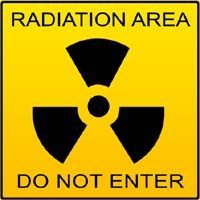Risk for Mesothelioma After Radiation Treatment is Low
 There is some good news for cancer survivors who have undergone external beam radiation as part of their therapy: The risk for mesothelioma later in life is still very low.
There is some good news for cancer survivors who have undergone external beam radiation as part of their therapy: The risk for mesothelioma later in life is still very low.
Most cases of mesothelioma are caused by occupational or environmental exposure to asbestos.
But scientists have long known that exposure to radiation can also cause cellular changes that increase the risk of eventually developing mesothelioma.
Now, researchers in Italy have completed a longitudinal analysis of the US government’s large SEER cancer database and concluded that malignant mesothelioma is only slightly more common in cancer patients who have had radiation than it is in the general public.
External Beam Radiation and Mesothelioma
External Beam Radiation (EBRT) is designed to reduce the size or eliminate solid tumors by altering their DNA in lethal ways.
Although every precaution is used to limit the amount of radiation absorbed by healthy tissue, there is almost always some spillover. It is this excess radiation which leads to side effects, such as hair loss, often associated with radiation treatment.
But does this radiation always increase the likelihood of developing pleural or peritoneal mesothelioma down the road? Fortunately, the answer appears to be no.
Latent Mesothelioma After EBRT
Researchers with the University of Bologna in Italy used data from the US Surveillance, Epidemiology, and End Results or SEER database to glean information on cancer patients between 1973 and 2012.
Among the 935,637 patients they analyzed, they discovered 301 mesothelioma patients, most of whom had pleural mesothelioma.
In the radiation-treated patients there was a very slightly increased risk for both pleural and peritoneal mesothelioma, although peritoneal mesothelioma seemed to only occur in people who had direct peritoneal radiation.
Mesothelioma Incidence Still Low
Although the team concludes that “EBRT might be a determinant of mesothelioma”, the association was small enough to be encouraging for cancer survivors.
“The cumulative incidence function of mesothelioma after 40 years of observation was very low (non irradiated patients 0.00032, irradiated patients 0.00055),” writes study author and University of Bologna epidemiologist Andrea Farioli, MD. “The clinical impact of mesothelioma after EBRT for primary solid tumors is limited.”
Not surprisingly, cancer patients who lived the longest after radiotherapy treatment had the highest risk for mesothelioma. This is also the case with asbestos-induced mesothelioma which can take decades to develop.
Source:
Farioli, A, “Radiation-induced mesothelioma among long-term solid cancer survivors: a longitudinal analysis of SEER database”, February 10, 2016, Cancer Medicine





